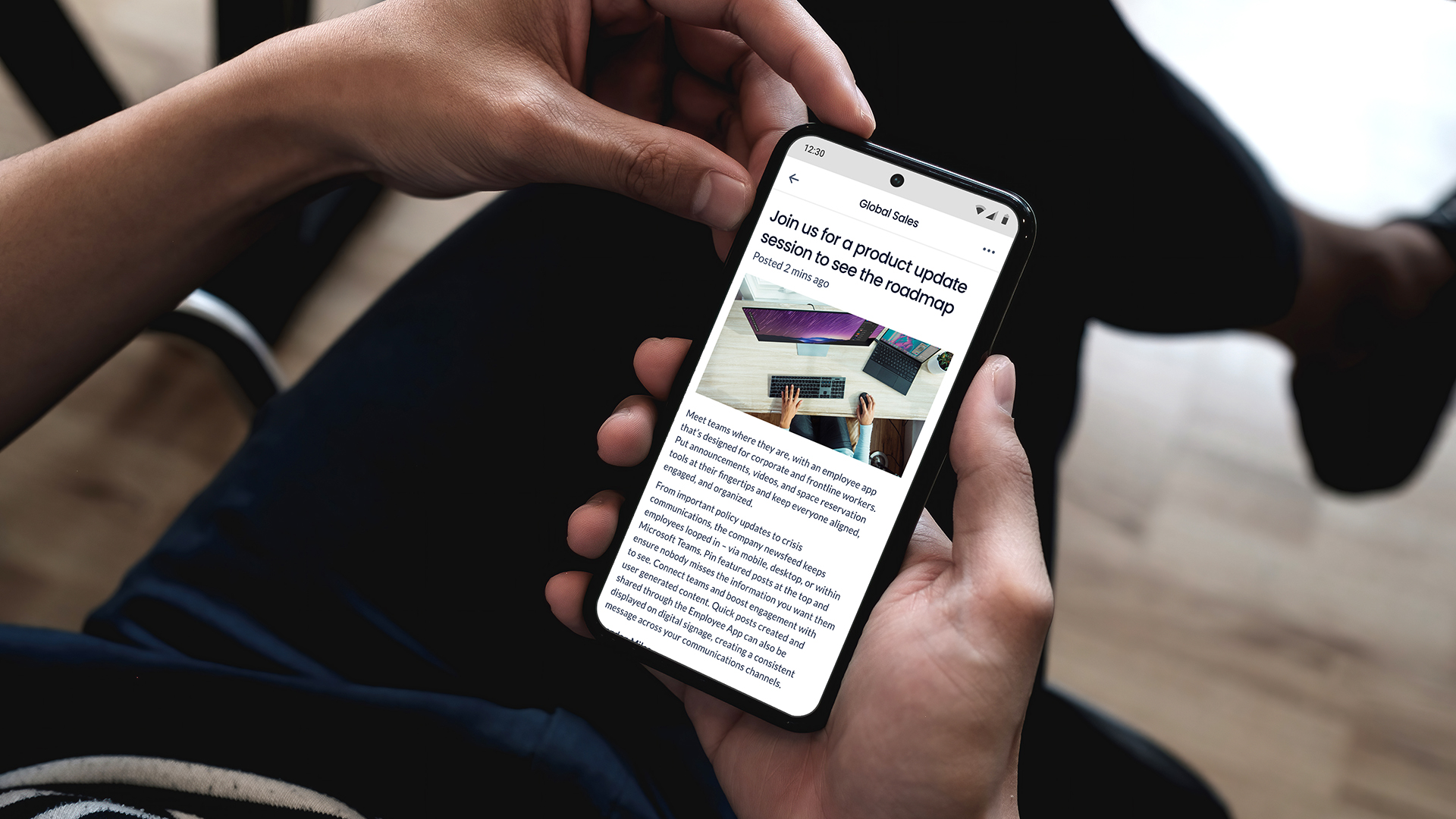Most of us can probably agree that communication platforms like Microsoft Teams and Slack have made quick collaboration infinitely easier. But research shows that while these platforms have their strengths, using them just as text-based tools means companies are missing a trick.
Why? Because most people learn better, retain more information for longer, and are more engaged when information is presented visually.
Tweets with images, for example, are 94% more likely to be retweeted than tweets without.
When you consider that 65% of people are visual learners, there’s a strong case for using images and visual aids to help strengthen employee performance and information retention. And one way to share those images is via your intranet or employee app.
Here are some things you can do with workplace communication visuals that will make a positive impact:
1. Another meeting? No. Use video instead.
There’s a reason Shopify canceled all recurring meetings as part of a company-wide “calendar purge.” Meetings and training sessions, whether via video call or in person, can eat up a lot of time and resources (unless, of course, they’re carefully curated and moderated).
Using video to replace meetings and training cuts the time needed to communicate important information. Let’s face it: A well-structured five-minute company update that’s carefully scripted will always be appreciated by time-pressed staff. Plus, that’s five minutes with no interruptions or distractions.
Training videos save money too, because they can be widely distributed and reused for new joiners.
In both cases, your team can digest the material when it suits them, and many will appreciate being able to freely pause, rewind, or even re-watch the video.
2. Take your best shot. Use screenshots for feedback.
For organizations that are constantly refining ideas and projects, providing written edits and feedback can be a time suck. Combing through a giant wall of text for just a handful of edits can be annoying and confusing (if issues aren’t explained properly) for your staff.
Instead, annotated screenshots of the specific pages where changes are needed means your employee will get straight to the information they need and will be able to respond much quicker.
3. Show and tell.
Providing pictures next to text is a no-brainer. It’s always been an effective way to teach information and ensure it is memorable. As humans, we’re hardwired to recognize visuals and then associate those visuals with information.
Choose images that will connect with your audience. They could be taken from around the workplace (making them relevant to their work) or bright, colorful, or surprising, aiding recall.
It’s important to consider diversity and inclusion when selecting workplace communication images. People feel included when they’re positively represented. And try not to fall into cliché traps when choosing the right images (hint: don’t be tempted by images of soccer goals, hackers in hoodies, or businessmen shaking hands).
4. Slides can be your friend.
Slide presentations like Google Slides or Microsoft PowerPoint are useful when communicating a lot of information to many people — all at once. However, using chunky walls of text and bullet point after bullet point is a sure fire way to bore and demotivate your audience from learning anything.
Effective slide presentations bring all of the above visual aids together to create an experience people remember.
Use images to reinforce ideas or procedures, and break the presentation up with short videos to keep everyone engaged.
Ready to improve your workplace communication?
It’s not enough to just know how to create an effective workplace communication strategy through imagery. You need the tools to make this possible and easy. And that means taking an omni-channel approach to workplace communications. It means being able to reach every type of worker, with content that’s accompanied by compelling imagery – whether people are working on-site, remote, or on the front line.
Beyond that, it’s about real engagement. It’s one thing to email a recorded video out to the entire company with a slide deck attached. But when you post that to an employee app or intranet, for example, you’re inviting involvement, with social features that let people comment, like, and get in on the conversation.
Learn more about our Intranet, Employee App and Content & Publishing solutions and how you can use them to create better visual aids and help your company thrive.
Interested? Get in touch.


